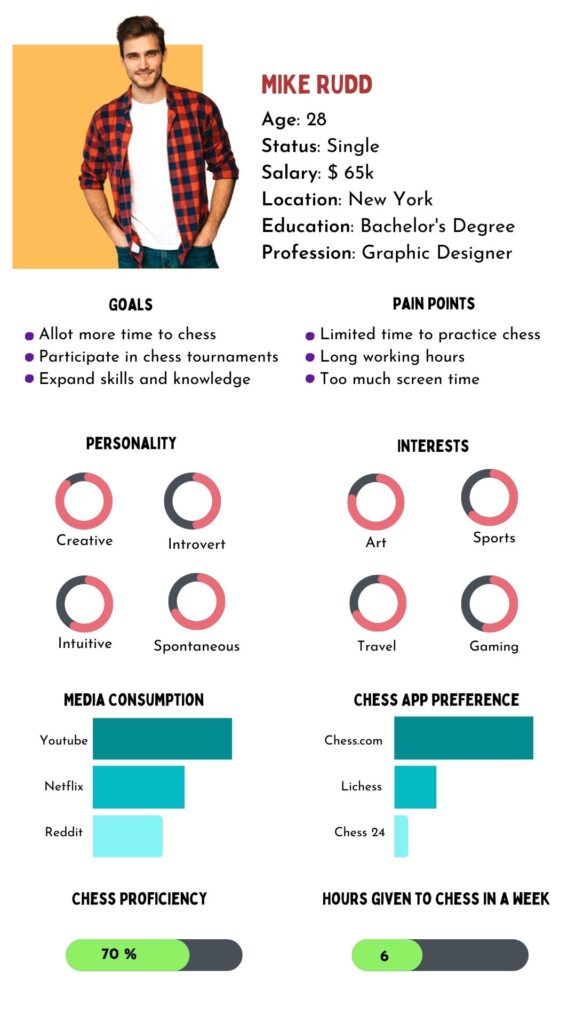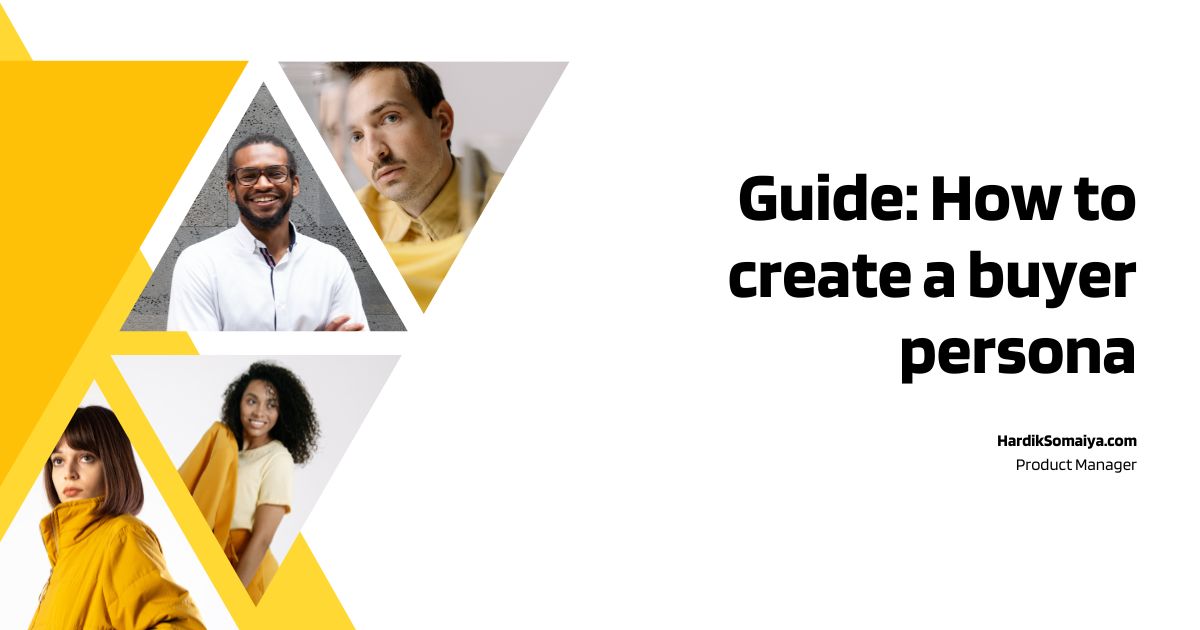Industry leaders spend thousands of dollars building a persona and they strive to understand how to create a buyer persona that resonates with their target audience segments. It’s common knowledge that buyers, customers or consumers can either make or break brands. Therefore, conducting primary research and culling out in-depth insights about one’s target audience can enable a business to get an edge over its competition.
Firstly, kudos to you for taking the first step toward brand awareness Building a buyer persona for your business might be a bit tricky to get a hang of. This article is my attempt at making the whole process a bit easier for you. Let’s get started!
Firstly, let’s get the basics out of the way.
Table of Contents
What is a Buyer Persona?
In simple words, a buyer persona is an answer to all ‘WH’ questions’ your brand would ask. Think of a persona as a fictional character with all the traits which make him/her your brand’s most eligible buyer/user.
Why are buyer personas important?
In today’s predominantly digital age, understanding your buyers/audience is important for everyone in your company. A business cannot really exist for profit without the presence of a buyer/user. Therefore, knowing how to create a buyer persona becomes a solution that enables every team like design, product, marketing, sales and support to understand, emphasize and work on what’s best for the buyer/user the organization wants to serve.
Buyer OR User – Which Persona Should You Choose?
Before starting this exercise, it’s better to know what type of persona you’d like to build.
The buyer persona (sometimes referred to as customer persona) represents the person who decides to buy your product and he/she might buy but in some cases, they buy it for others.
Let’s understand via this example,
For a B2B product (for instance, a brand like Slack), the buyer would be the CxO/Manager/someone senior, and the end user might be the employees of the organization.
Whereas, the user persona is a persona that represents the end user of your product.
For some businesses, the buyer and user might be the same. For instance, the brand Uber.
What should your persona cover?
Typically, the following things are covered in most of the buyer/user persona:
- Demographics (this typically includes one’s age, location, education, employment, income, family/marital status, racial classification, etc)
- A small paragraph representing their requirement/problem that your product sells
- Pain points wrt the challenges, issues or any concerns that may come with the choice of purchase
- Goals/needs that help the buyer by adding value or solving a problem
Additionally, here are some things that you can cover:
- Where do they spend the most time?
- What do they do online the most?
- Factors that influence their buying decision
- How much is the individual aware of the competitive market? What competitor product did they use before switching over to yours?
Knowing answers to these questions would help you and your team to be in a better position in every aspect of:
- HOW to find similar buyers,
- WHERE to find them, and
- WHAT inspires them to use your product
How many buyer personas are enough?
Generally, businesses have more than one category of the buyer and hence there are multiple personas in most cases. But there’s no golden rule here, it depends on your business/product.
Can everyone be a persona? No, even big companies like Google or Meta have a selective number of personas they focus on.
How do you create a buyer persona?
This part requires the most legwork. There are multiple ways in which you can arrive at your persona. However, an important thing to know before starting is that building a persona in most cases is not a one-time thing. It’s something that can change over time depending on the market scenario and various other factors.
To collect data to arrive at the user or buyer persona, you can do the following activities:
- User Interviews – talking to your existing users or buyers
- Conducting detailed surveys
- Talking to your sales team
- Looking at data that you already have – if you sell online, this data could be from tools such as Google Analytics, Ads tools (Meta, Google, etc)
If you are conducting user interviews or surveys, as motivation, it would be wise to give some rewards to buyers/users who contributed towards this.
What’s the ideal sample size to arrive at a persona?
The sample size is the number of buyers or users that took your survey or gave input towards your persona-building process.
There’s no golden rule here, but one colleague who is at a very large organization said that most large organizations consider a 500-600 sample size big enough to arrive at a decisive conclusion. At the same time, sample sizes between 200-400 should also work in most cases, if the answer that you’re looking for is decisive enough.
Representing a Persona Graphically
The next step would be to take all the data you have collected and create a graphical representation so that it is easier for everyone in your team to read & understand.
Here’s an example of a visual representation of a persona

In Conclusion
I really appreciate the fact that you dedicated your time to reading this blog post until the end. If you are a UX designer, product manager, or even a business owner, I hope the above article helped you in understanding the process of how to create a buyer persona.
What would you like to read about more? What are you struggling with, professionally? Let me know your thoughts in the comments section below.
Like what you read? Don’t forget to share.
Credits
I was part of a team that initiated the buyer persona-building activity for the brand that I work for. It took us 2-2.5 months to do this and this wouldn’t have been possible without help from my awesome colleagues – Rohit Methwani (UI/UX Designer) and Ameya Kolambekar (Chief Strategy Officer).

Leave a Reply